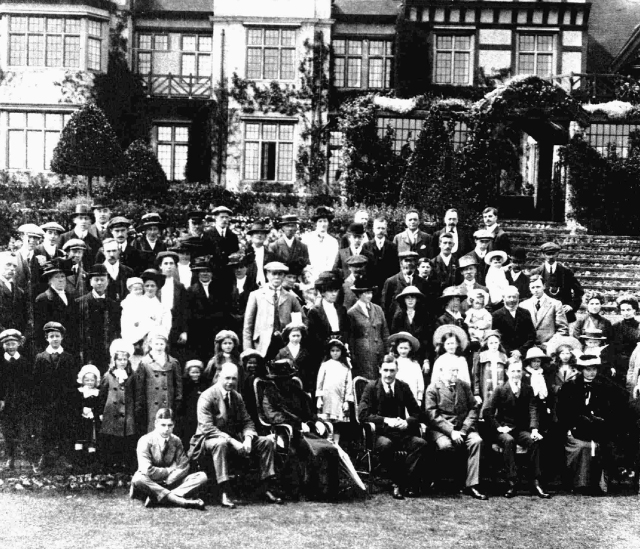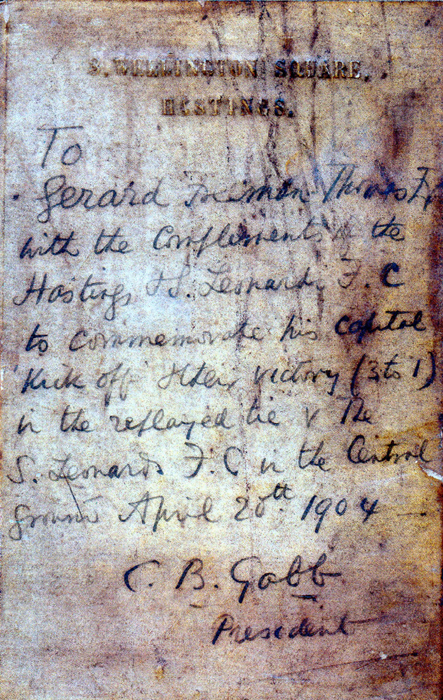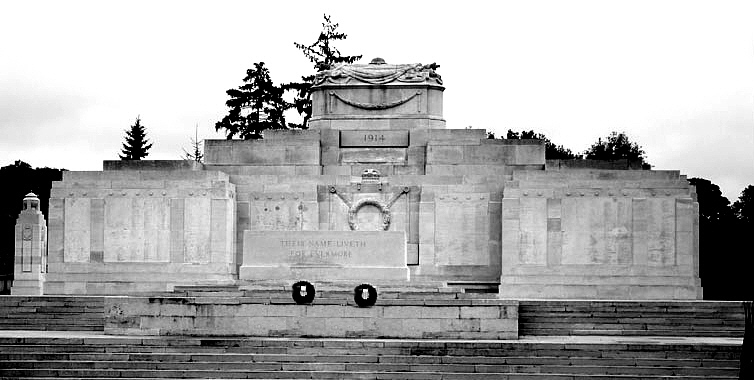The Hon Gerard Freeman-Thomas was one of the first casualties of WW1 in the Eastbourne area and his death was to have far reaching consequences for the future development of large areas of Willingdon and parts of Eastbourne.
Gerard Frederick Freeman-Thomas was the elder son and heir of Freeman Freeman-Thomas, Lord Willingdon who became the 1st Marquis. He was born 3 May 1893 at the family’s London residence but lived much of his early life in Willingdon.Gerard appears to also have been a noted sportsman and, after leading Hastings and St Leonards FC in a 3-1 victory over St Leonards FC in 1904. The letter read:
“To: Gerard Freeman-Thomas with the compliments of the Hastings and St.Leonards F.C to commemorate his capital kick-off …. victory (3 to 1) in the replayed tie v. The St.Leonards F.C in the Central ground on April 20th 1904. Signed C.B.Gabb, President”
The signatory of this letter was Claude Baker Gabb a retired surgeon who was born in Hastings and was living at 3 Wellington Street in the 1901 census, the actual address on the letter. He was keenly associated with sports and there is still the The Claude Baker Gabb Swimming Trophy. Newspaper archives demonstrate his association with various sports and boys’ schools in Hastings.
Gerard was later educated at Eton and Sandhurst gaining a commission in the Coldstream Guards in September 1913.
The group photograph (above) was taken in front of Ratton Manor on 4 May 1914, the occasion being a presentation to Gerard by Ratton staff the day after his 21st birthday. His parents were in India where Lord Willingdon was Governor of Bombay but Gerard is surrounded by estate workers and their families, his younger brother Inigo and two grandparents the Earl Brassey and Hon Mabel Thomas. No doubt this celebration was looking to the future of a privileged young man destined to become the 2nd Marquis of Willingdon. However the 1914-18 war was to change that as just 4 months later on 14 September 1914 Second Lt Gerard Frederick Freeman-Thomas of the 1st Battalion, Coldstream Guards was fatally wounded. There is little information, other than the report of his injury by a former Eastbourne Policeman, Thomas Evenden, who was in the same battalion and Lt Roderick a fellow officer who gave evidence to the High Court.
It was on the second day of the Battle of the Aisne at about 6.30am when the 1st Battalion Coldstream Guards engaged with the Germans coming under heavy fire in a cornfield. Witnesses saw a shell explode near Gerard who fell bleeding with a serious shrapnel wound to the thigh. He told his colleagues to leave him and continue. A sergeant going to his assistance was also hit so Thomas Evenden went to his aid, plugged and bandaged his wound as best he could and carried him 50 yards to a road below the battlefield, to a haystack where there were about 15 men, all that remained of their company.
The Germans were advancing in such numbers that the remaining men had to retreat leaving Lt Freeman-Thomas in the area taken by the enemy and where no stretcher bearers were able to search for another 15 hours. Witnesses said he could not have survived with such a wound and they found no sign of him. It was assumed he was taken prisoner by the Germans..
The Willingdon Parish Magazine of October 1914 records that. ‘Gerard was missing, wounded but alive and in the charge of a French or German ambulance detachment’. This was supposition as there was no evidence of what happened to him and nothing further was ever heard of Gerard. Exhaustive enquiries were made and large sums of money spent by his father and his grandfather Earl Brassey in trying to trace him. Lord Brassey sent a man to France to make enquiries and also tried to trace his grandson by way of the American Embassy but to no avail and in consequence after a few months the family gave up all hope of his survival. To complicate matters much of the Ratton Estate had been passed to Gerard at the time of his 21st birthday and he had executed a disentailing deed on the property. As he was listed as missing and not killed the family sought a legal ruling to have his death confirmed. In May and June 1915 his fate formed a case in the Probate Division of the High Court of Justice. After two hearings leave was given by Mr Justice Bargrave Deane to presume the death of Gerard Freeman-Thomas on 14 September 1914. His life was insured for £15,000.
Gerard was killed just 5 weeks after Britain declared war on Germany and he was the first of the twenty four young men from Willingdon to be killed in action. As he has no known grave, his name is inscribed on the Ferte Sous Jouarre Memorial France. He is also commemorated on the Willingdon parish memorials in the church and memorial hall; on the Eton Roll of Honour and In Lord’s Cricket Pavilion on the Roll of MCC members. As a direct result of his death, the Ratton Estate was divided into Lots and auctioned at the Saffron Rooms Meads Road Eastbourne at 11.45am on Tuesday 12 November 1918, the day after the Armistice and the Freeman-Thomas family left Ratton Manor having lived there since 1769.
This story was submitted by Rosalind Hodge Archivist Willingdon Parish Church and updated following fresh information from Bert Arter











